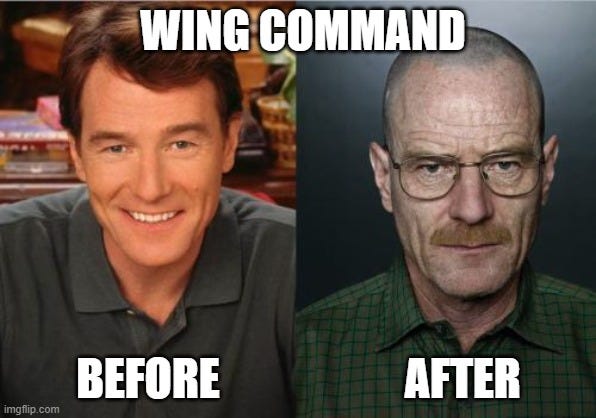Notes from the Siege
Advice for leaders who find themselves in the relentless middle
Everyone in a leadership role is actually fulfilling several roles simultaneously, constantly re-balancing and re-prioritizing to support competing imperatives.
When we think about leadership, we imagine a role with responsibility for a large team of others. We imagine most effort and focus directed “downward” along the vertical structure of authority we occupy.
But every leader, including those with words like senior, general, and executive in their titles, is also doing something else: following.
Everyone has a boss. And therefore, everyone is to some extent operating in the middle of an organization.
But some roles are more middle than others. If you manage to climb high enough in an organization, you find yourself in a war with multiple fronts. Executives march from one direction. Frontline workers and managers march from another. Support agencies, functional experts, financiers, and peer organizations assail the flanks.
Your role resides at the nexus of everyone’s interests, and you are relentlessly under pressure.
It occurs to me there’s a lot of advice about how to make it to such roles, but not a lot about how to succeed in them. Alas, my contribution.
Some years ago, a good friend and mentor of mine said something I didn’t quite grasp but have since grown to understand. Let’s call this friend Donny.
“No one would want this job if they knew what it was. I worked my whole life to get here, and honestly wish someone else had been chosen.”
I was gobsmacked.
Donny was a wing commander in the United States Air Force, and had made the list for Brigadier General. His career was an unbroken string of wins and superlatives. He was a walking celebration of leadership. At that point in my own journey, I hoped I could grow up to be Donny.
But as it turned out, he was damned miserable much of the time. The lines in his face sunk deeper each day he occupied the role he’d fought and sacrificed for two decades to reach.
To the outside world, he appeared upbeat, resolute, and top 1% successful.
But he was under siege.
Having since gained a lot more experience, my purpose now is to share advice on how to navigate this level of leadership. A level where, despite perceptions to contrary, a leader’s authority is never smaller in comparison to the responsibility resting atop their shoulders.
What Makes a Siege Role Different
There is a level where a leader is separated from the rest of team, but not yet part of the executive layer. This is usually the layer where we begin to refer to someone as a “senior leader.”
In operations, these roles typically involve being entrusted with an entire business unit. In the Air Force, wing and base commanders are in this space. In Amazon operations, General Managers and Directors are in this space.
At this level, leaders have degrees of status and prestige that foster galactic expectation from below. People imagine them having Godlike authority. They speak for and represent the company, which creates the impression of agency in the decisions and policies being communicated.
But the reality is that they are mainly entrusted to re-transmit decisions made by others, and primarily exist to execute on behalf of the business. Execution authority exists in a defined space, often a narrowly bounded one.
The pressure to deliver is immense. To carry out someone else’s vision as though it is your own. Sure, you can have your own vision, but it must square and align perfectly with what is communicated from the executive level.
Such alignment is part of sustaining the fiction that you’re a fully empowered agent of the organization. This is important so people continue to bring you problems, so you continue to be credible, so you continue to take flak.
Politics is part of the job, and narrative misalignment is just one landmine capable of exploding your goal of surviving the siege and ascending to a level where you have more authority and influence.
There is something else that comes with this role. Something which isn’t commonly discussed despite being a common source of toxicity.
Senior leaders are expected to show toughness. To show an absence of patience. To show an absence of mercy. To “set the example” when the moment arises, which means bringing a heavy hand to personnel decisions, lest benefactors believe you’re too squeamish for the big time. Bypassing an opportunity for human sacrifice is professionally fatal for wannabe generals and Vice Presidents.
Of course I’m generalizing. But the picture painted reflects the observed and documented culture prevailing across most of our businesses and public institutions, rooted as they are in 1950s-era modernist management science ideas. These have been reinforced over the generations by hordes of MBA grads unwittingly championing the moral and ethical hollowing of capitalism.
The expectation of being hard-nosed with people as a senior leader is usually cloaked in “making the hard calls” or some such word salad doused with managerial verve. What it really means is that you’re a message mule taking a dirty burden off executives so they don’t have to explain themselves. Because that is something executives abhor doing, I say with hard-earned bias.
They decide on layoffs and pay cuts. You deliver the message and do the firing, then manage the impact.
Because they are not under siege. You are.
Making the Leap
Navigating a siege role requires striking a complex and delicate balance across a broad group of stakeholders using a broad set of skills. You will be more exposed than during previous promotions, because the broader base of skills you need has typically not been ingrained, perhaps not even introduced. You’ll be learning on the job while onlookers watch every twitch and wait for an error.
I’m thinking of the Air Force when I mention this next bit, but what it describes is not uncommon in other organizations.
Tactical command is the core Air Force skillset. Gathering a small element of airmen and equipment, forming them into a team, analyzing adversary capabilities, devising a plan, and then executing with elite ability is the bread and butter of airpower. And it’s led by captains and majors.
Doing this well involves something like absolute authority. A formation leader is not so much influencing teammates as directing and controlling them. The leader is both a dancer and a choreographer, producing and directing the physical movements of others. At hundreds of miles per hour, a flight lead’s direction is not questioned. There’s no time. Disagreements are hashed out in debrief sometimes, but often just forgotten.
Air Force officers succeed by being elite at tactical command, which means giving clear direction in relatively unambiguous circumstances and facing few questions.
Even at the first couple levels of unit command, their grants of authority and responsibility are narrow and calibrated. They execute, and inherit the implied task of making sure their teams are ready to do so.
Wing command is different. The skillset is massive. The resources required by the leader to be successful are not in direct control. Those resources, and the speed and enthusiasm of their delivery, must be earned through influence and persuasion. There are dotted lines connecting a senior leader to key support staff who report to functional managers. They earn promotion by impressing people outside the organization.
Being unprepared for these shifts in the dynamic can amplify the pain of a difficult role. For some, the leap is never made.
The picture I shared at the top of this article depicts Col. Bob Sink and Maj. Dick Winters, two characters from the HBO Series Band of Brothers who represent real-life figures. In the scene depicted, Sink has promoted Winters, forcing him to leave his company of soldiers in someone else’s hands. Winters struggles. His skillset is not yet broad enough to make him effective, and he’s not sure how to calibrate his involvement.
He regrets his promotion and wishes he could give it back. Much like Donny.
Those who have been developed with a broad aperture, stepped beyond their comfort zone, and been given the right exposure will quickly grasp the challenge and navigate the steep learning curve of a siege position.
Those who have had limited broadening, either because (a) they took longer to establish expertise in tactical command or its equivalent, or (b) because they chose to over-invest in the comfortable depth of a narrow skillset, will struggle more.
And they will be under pressure from all sides from the first hour of the first day.
My Advice in a Siege Role
Here’s a few thoughts, free of charge and worth every penny.
You can't just work more. You will run out of time. You must drastically reduce your direct involvement. Come to a senior role with mechanisms to delegate effectively and keep touch with key details efficiently.
Trust doesn’t work the same. You’ve been successful by building relationships and leveraging your personal character to get things done. But in a senior role, people are not assessing you as an individual. It’s about how much they trust the organization you represent, and that’s true in both directions. If your people lose trust in the company, your personal reputation won’t matter. If executives lose trust in your organization, your individual qualities won’t matter.
It’s not fair. You can get sacked for results, whether you made the right inputs or not. Your intent does not matter. In fact, someone in your organization can do something unforeseeable, without your knowledge or consent, and you can get fired for it. Now, you may be thinking you would fight an unfair removal from your position. But that kind of hope will kill you. The safeguards designed to assure fairness are typically captured and corrupt. Know going in that the company may turn against you unfairly. It may scapegoat you. Once that happens, you are powerless. Which is why a siege role is political by definition. You will lose your job if you’re not in good graces. And those good graces don’t always align to what’s right or fair or even sensible.
You must maintain the initiative. My siege metaphor implies a defensive posture, but within that, your ability to secure your perimeter and protect the performance of your team depends on making proactive decisions about where to spend your focus and energy. You must be dictating terms. The territory you cover means if you get caught in firefighting mode, you will not survive. How do you get the initiative back once you lose it? This is extremely difficult. But it’s mainly about knowing you’ve lost it and making shrewd decisions about how to bleed without dying, then rapidly regrouping.
You have the power to destroy yourself. Executives commonly will (and always should) accept your decisions without verification, because they need to be spending their time on other stuff. This is great, but it creates a new risk. If you show poor judgement, if you exceed your authority, or if your manner of operating brings discredit on the organization, the executive who chose to trust you will have their sense of safety poked at. The results are unfailingly ugly.
Performance pressure is part of the territory. If you don't handle it well, you'll be declared a bad hire and your career will end. You won't get a chance to improve if you drop below the line for long, and you may not get feedback to help you correct. Where the performance line is drawn is itself ambiguous and arbitrary in the first place. All of which gives you no choice but to give everything you have all the time for the avoidance of doubt. There are fifty people waiting to take your spot, and so much competition for the next level that anything short of a ringing and unanimous endorsement will end your progression.
You will be less visible. Although you will represent the company in carefully scripted external engagements, you will be less known internally. If being the center of attention is your gig, find another job. This is one I’ve seen go wrong a lot. Senior leaders have become successful by having strong engagement and communication skills. Many are charismatic and inspirational figures with a “rock star” quality about them. But your team is too big for you to be known by everyone, and to the extent you pull attention onto yourself, it’s burglarized from leaders at lower levels who need to be focal in their own right. Preserving your star quality for the right moments will marshal its impact. But overdosing on organizational tourism is a common problem for senior leaders. Their roles are lonely, and they become anxious relying on the same small circle of people for insight and interaction. Many people think they want a senior role, then realize it's a lot of sitting in the corner licking your coat while the rest of the zoo goes about business. Know what you’re getting into and be able to sit with isolation.
You no longer speak for yourself. It doesn’t matter how many disclaimers you issue, you will be understood to represent the entire organization every time you speak. You are capable of harming the reputation of the whole business. Give someone on your team the job of interrupting you any time you start a sentence with “this is just my view” or “speaking only for myself” or “I’m not speaking for the company when I say this, but.” I wish we lived in a world where you could distinguish your views and still communicate them, but that’s seldom how it works.
Politics will try to capture you. There is a political element of the job. You will have to make deals. You will have to say things you don’t mean. You will have to employ the tools of subtle influence. But be careful. Getting good at political behavior can become a source of dopamine. If you get addicted to doing things this way, you’ll be in danger of coming unmoored from principle and justifying means with ends as a default. When you’re not carrying the company value system forward, it will die in your domain. Your people will notice. The only ones who will remain loyal after this point are the pragmatists willing to sell their grandparents a reverse mortgage to get promoted. The good ones with convictions will be long gone.
Donny told me something else.
“If I survive this job, I’m going to hunt down and sucker-punch every louse who let me believe it was going to be fun.”
So take it from me. There is a code of silence preventing the truth from being given to you without six inches of lacquer to make it shine.
But siege roles are just that. They are not designed to be fun, and aren’t most of the time. They are rites of passage. If you suffer successfully, another step forward is possible.
But don’t be hoodwinked. Go in with eyes wide open and ready to do battle.
TC is an American writer with an interest in organizational leadership and more than thirty years experience in leadership roles at multiple levels.





